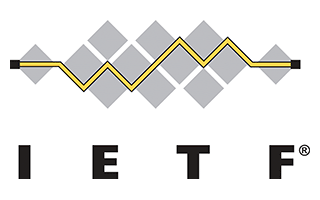Written by Ramón Saquete
After more than 15 years without a new version of the HTTP protocol, the director of the IETF, Mark Nottinghan, tells us in his blog that today the new version of the HTTP/2 protocol has been approved, whose RFC is pending publication.
The HTTP protocol is the application layer header that is sent in all data packets exchanged between the browser and the web server, its task is to manage the way and manner in which requests and responses are made. It was originally devised by Tim Berners Lee and in 1996 it was standardized with version 1.0. The next version appeared in 1999, version 1.1, which is currently used in all web servers.
The standardization of the new HTTP/2 protocol is a historic event that will significantly improve Web load times.
Version 2, is compatible with the operation of versions 1.1 and 1.0, keeping the same status codes (200, 301, 301…), 404, etc.), methods (GET, POST, HEAD, …), format of URLs and the parameters used. The differences, listed below, affect performance only:

- Headers in binary format instead of text format and also compressed, thus reducing the amount of information transmitted.
- Server push technology: allows files to be sent from the server to the client without being requested by the client. When we ordered a page, first the HTML was downloaded, then all the CSS files, JavaScripts and images linked by it. These files in turn could reference other files that would be downloaded last. With server push technology, you can send all the files needed to load the page from the beginning, without having to wait for the browser to interpret the HTML.
- Multiplexing: Each of the files loaded on a page must be sent from separate TCP connections, forcing browsers to open a limited number of TCP connections to achieve equally limited download parallelism. These connections can be left open using the Keep-Alive parameter, but it is necessary to have several and this creates congestion problems in the communication, causing that the requested files have to wait until the ones that are occupying the TCP connections are completely downloaded before they can be sent.
With HTTP/2 , several requests or pieces of file responses are sent over the same TCP connection. The fact of sending several file chunks in a single connection (multiplexing), allows to parallelize the download without unnecessary waiting.
When will the new HTTP/2 protocol be available?
To make use of this new protocol it is necessary that both the server and the client browser support it. If either of them does not support the protocol, the previous version will be used, by means of a protocol negotiation mechanism. It is currently supported by all browsers (in Internet Explorer from version 11 onwards), however, current implementations are based on the draft specification.
In servers, for the moment it can be used in IIS for Windows 10 TP and, for Apache, there is nothing, but it is to be expected that some module will be developed soon.
When a new technology appears, it is usual to wait for a reasonable time before implementing it on the servers, as the first versions may have bugs. So we will still have to wait for some time before HTTP/2 is massively implemented in hosting services.
What will the HTTP/2 protocol mean?
HTTP/2 will improve load times by about 30%. So from now on, it is going to become an indispensable requirement to obtain a good WPO score and consequently improve indexing, SEO and decrease bounce rate.
Google has actively collaborated in the development of HTTP/2, since it is based on its SPDY protocol. So it would not be unusual for Google to start ranking websites higher simply because they use HTTP/2.
In terms of development, some WPO techniques will become obsolete, but this will not be until the adoption of HTTP/2 is complete.